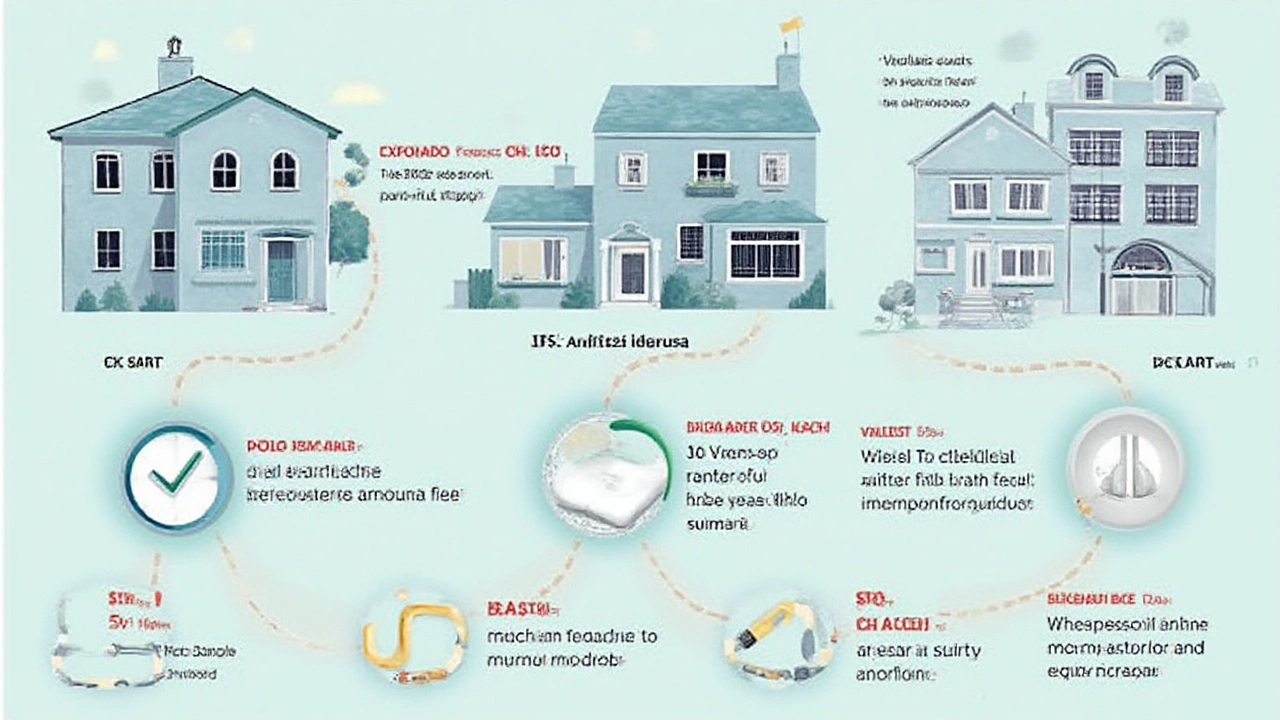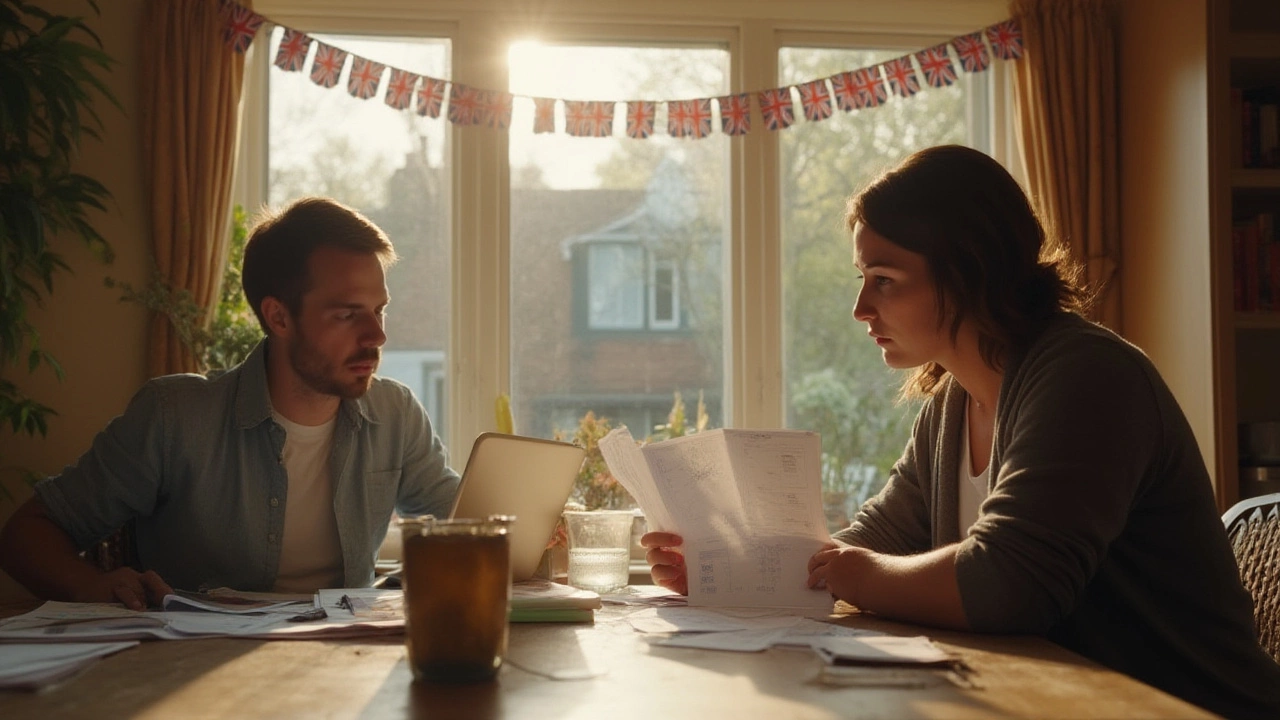Locked-up home equity can feel like money just sitting there, especially when bills, tuition, or renovation dreams come knocking. But here’s the kicker: not all ways of cashing out that equity are created equal, and some can leave your wallet thinner than you were hoping. Homeowners are pulling out more equity than ever—according to CoreLogic, Americans tapped into $150 billion of home equity in just the last quarter of 2024. So, with rates and terms constantly shifting, what’s the cheapest way to access your house’s value without hijacking your budget?
Understanding Home Equity and What Affects Its Cost
Home equity is simple: it’s what’s left after you subtract what you owe on your mortgage from your home’s market value. A lot of folks don’t realize just how much their property value has grown since the pandemic—Zillow’s numbers peg the average U.S. home price at $396,000 in June 2025, up almost 40% from five years ago. It’s tempting to see that as a piggy bank. But let’s be honest—extracting it isn’t free.
What really chews up your savings when you tap equity? Interest rates, closing costs, term length, and sneaky fees like annual charges or early repayment penalties. The cheapest option often boils down to your credit score, how much you want, and for how long. Lenders charge less interest when they see you as low-risk and when your amount is manageable compared to your home’s value. If you’re aiming to walk away with cash and not headaches, comparing specific details isn’t optional—it’s everything.
I’ll never forget last spring, poring over the numbers with my daughter Lila on her laptop. We plugged our place into a rate comparison tool and discovered that closing costs for some equity loans were double others—even when the advertised rates looked identical. This is why it’s not just the number on top of the application that matters. You’ve got to weigh points, origination fees, appraisals, and the ever-present temptation of rolling costs into the loan itself (spoiler: that can turn today’s deal into tomorrow’s regret).
Home Equity Loan: Pros, Cons, and True Cost
The home equity loan, or second mortgage, is as old-school as it gets. You borrow a lump sum at a fixed rate, pay it back monthly, and you know exactly what you owe each time. It’s like getting a personal loan, but using your house as the collateral. In 2025, the average fixed rate on a home equity loan sits at about 7.2% for folks with solid credit, according to Bankrate.
Wondering if this is the cheapest way? If you only need a specific sum—say, to cover college for a year, or knock out old credit card debt—it can be. Closing costs typically land in the $500 to $2,000 range, or about 2% to 5% of the loan, but some lenders run promos waiving these fees to attract new customers. What’s great for budgeting parents like me is the predictability of payments. The number won’t suddenly lurch upwards in six months.
But here’s the part they bury in the fine print: if you want flexibility, home equity loans don’t offer much. The interest starts piling up the moment you get that check, even if it sits in your account for a while. Plus, miss a payment and you’re risking your house, not just a ding to your credit. Still, for one-time expenses or refueling savings after a big purchase, it can be the lowest-cost method if you compare offers and negotiate for fee waivers.
| Loan Type | Average Rate (2025) | Closing Costs | Best For |
|---|---|---|---|
| Home Equity Loan | 7.2% | $500-$2,000 | One-time cash needs |
| HELOC | 6.8% (variable) | $0-$1,500 | Flexible, ongoing needs |
| Cash-Out Refi | 7.1% | 2%-6% of refi | Refinancing high-rate mortgages |

HELOC: The Swiss Army Knife of Home Equity
The Home Equity Line of Credit (HELOC) works more like a credit card, letting you borrow, repay, and borrow again up to a limit over a decade or so. This was the route my neighbor Pat picked when he had to remodel his kitchen and—surprise!—replace his water heater three months later. No way would a single loan have fit both bills.
Interest rates on HELOCs tend to be a bit lower than fixed equity loans right now—about 6.8% as of summer 2025—but they float. That’s good news when rates drop, but as most folks learned in 2022, variable rates can bite you if the Federal Reserve hikes rates again. Closing costs are often lower, and some lenders charge none at all, but always watch for "annual fees" or "inactivity fees." That $75-a-year charge piles up if you plan to use the line as a rainy-day fund rather than maxing it out day one.
For people who aren’t sure how much they’ll need, or whose costs show up in waves—think, ongoing medical bills or paying tuition for multiple kids—a HELOC can be the cheapest. The trick is to pay attention to terms like the draw period, repayment period, and whether the promo rate turns into a much pricier number later on. You don’t want your flexible line to turn into a financial chokehold. A HELOC is probably not your friend if you need a large, predictable sum for the long haul, or if you’re the type who can’t resist spending available credit just because it’s there.
HELOC rates can be negotiated, and almost every lender will match competitors’ promos if you have good credit and a solid track record. Just ask. Here’s a quote worth remembering, from Michelle Raneri, VP of U.S. Research at TransUnion, in a recent Forbes interview:
"The best borrowers are always the ones who shop aggressively and aren’t afraid to ask questions about promotional rates, hidden fees, and how payment structures will adapt over time."
Cash-Out Refinance: When to Consider and the Hidden Price Tag
Cash-out refinancing means you replace your whole mortgage with a bigger one, taking the difference in cash. This option exploded during the post-COVID refinance boom, especially when mortgage rates were hovering near 3%. But here’s the curveball—now, with 30-year fixed rates near 7.1% (Freddie Mac), cash-out refis only make sense if your new rate is similar or lower than your current one.
If you snagged a dirt-cheap mortgage before 2022 and now you try to cash out, you’ll be exchanging your low payment for a higher one—a real gut punch, especially on a tight family budget. Closing costs are higher here, too, averaging 2% to 6% of the total loan. That’s $6,000 to $18,000 if you’re refinancing a $300,000 mortgage. Ouch.
The flip side? If your mortgage rate is already high or you need a big lump sum (think major home addition or buying a business), a cash-out refinance might actually drop your payment IF you shop around. Some lenders offer tiny origination fees in exchange for a higher rate—others advertise low rates, but pile on points at closing. Always, always factor in how long you’ll stay in the home: if you’re selling in two years, you may never save enough on the new rate to justify the upfront cost.
Cash-out usually isn’t the cheapest equity-tapping tool, but it can be if you’re crushed by other high-interest debt and don’t want multiple monthly bills. Just be careful—rolling unsecured debt into your home puts your biggest asset at risk.

Tips to Get the Cheapest Deal and Avoid Costly Pitfalls
From a dad who’s swapped tips at soccer games and seen friends get stuck with ugly loan terms, here’s how you actually save:
- Always check your credit score before you apply. Pull your report from all three bureaus—a better score can chop a full percent off your rate.
- Get at least three competing offers in writing and use them as leverage. Lenders are battling viciously for good borrowers right now. Let them fight for you.
- Watch for prepayment penalties, balloon payments, or "teaser" rates that jump after a few months. No deal is ever as good as it seems on a billboard.
- If you’re a veteran, shop VA-backed options—they sometimes waive all closing costs, although you might face stricter eligibility.
- Never roll closing costs into your loan unless you have no other savings. Paying $2,000 in fees upfront beats paying $3,500 over 20 years.
- Ask if your local credit union or community bank can beat big lender rates; they often run special promos for longtime members.
- Always calculate the "break-even" point—how long will it take to recoup your costs? If you plan to move before then, skip it.
Your home’s equity can feel like free money. But getting cash out should feel like solving a puzzle, not winning the lottery. Focus on the all-in cost, not just the monthly payment. My kids, Rory and Lila, will probably thank me one day for hammering this into their heads before they ever take out a loan—no one wants to trade peace of mind for a few thousand bucks. Even Tiberius, our cat, chirps disapprovingly if I mention putting the house at risk for anything but the true essentials. And he’s rarely wrong.

